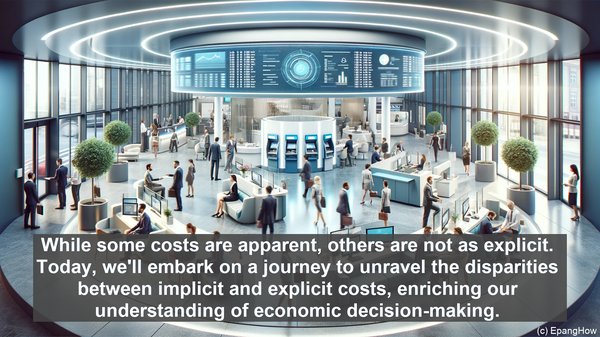Introduction: The Multifaceted Nature of Costs
Greetings, audience! Costs are omnipresent in our lives, and they hold immense importance in economics. While some costs are apparent, others are not as explicit. Today, we’ll embark on a journey to unravel the disparities between implicit and explicit costs, enriching our understanding of economic decision-making.

Explicit Costs: The Tangible Expenses
Explicit costs are the more recognizable type of costs. They encompass the actual monetary outlays a firm or an individual incurs. For instance, when a business purchases raw materials, pays wages, or invests in equipment, these are all explicit costs. They are explicit because they involve direct payments, leaving a clear financial trail.

Implicit Costs: The Hidden Opportunities
Implicit costs, on the other hand, are not as apparent. They are the opportunity costs associated with a decision. Opportunity cost refers to the value of the best alternative foregone when a particular choice is made. Implicit costs often involve sacrifices that do not involve a direct monetary outlay. For instance, if an entrepreneur decides to start their own business, the implicit costs may include the salary they could have earned by working for someone else.
The Interplay: Implicit and Explicit Costs in Decision-Making
In economic decision-making, both implicit and explicit costs come into play. While explicit costs are more tangible and easily quantifiable, implicit costs are equally significant. Ignoring implicit costs can lead to skewed decision-making. By considering both types of costs, individuals and firms can make more informed choices, taking into account the full range of consequences.
